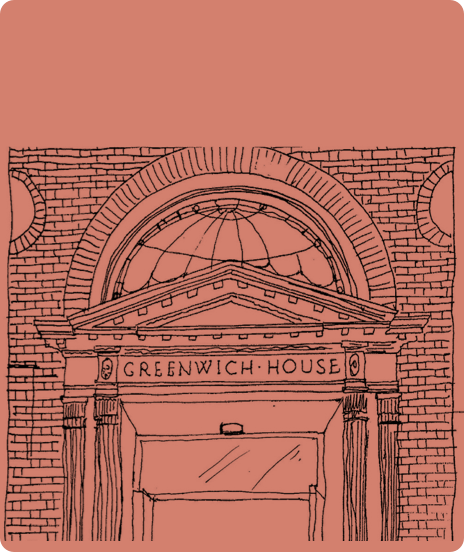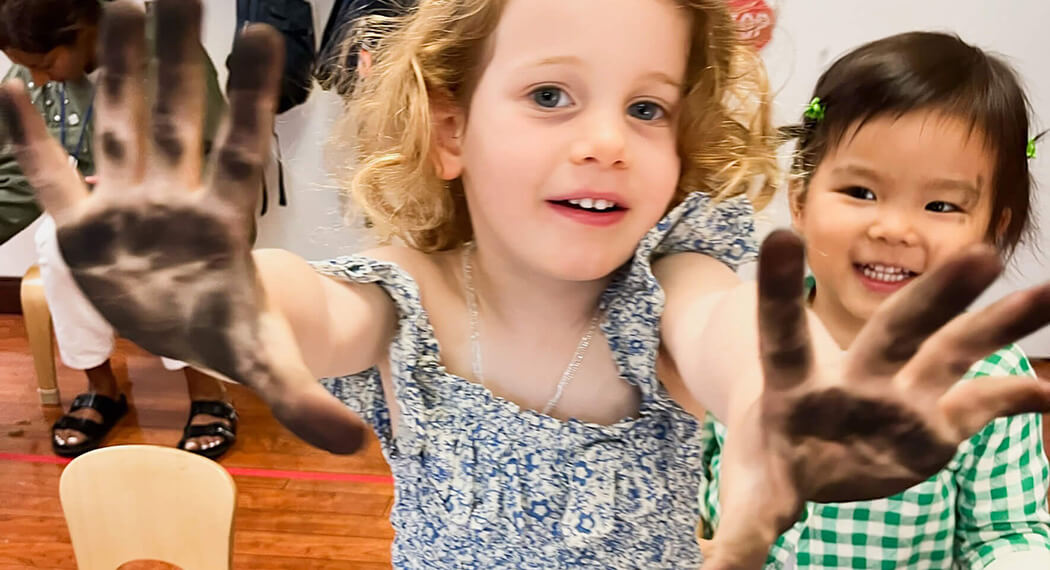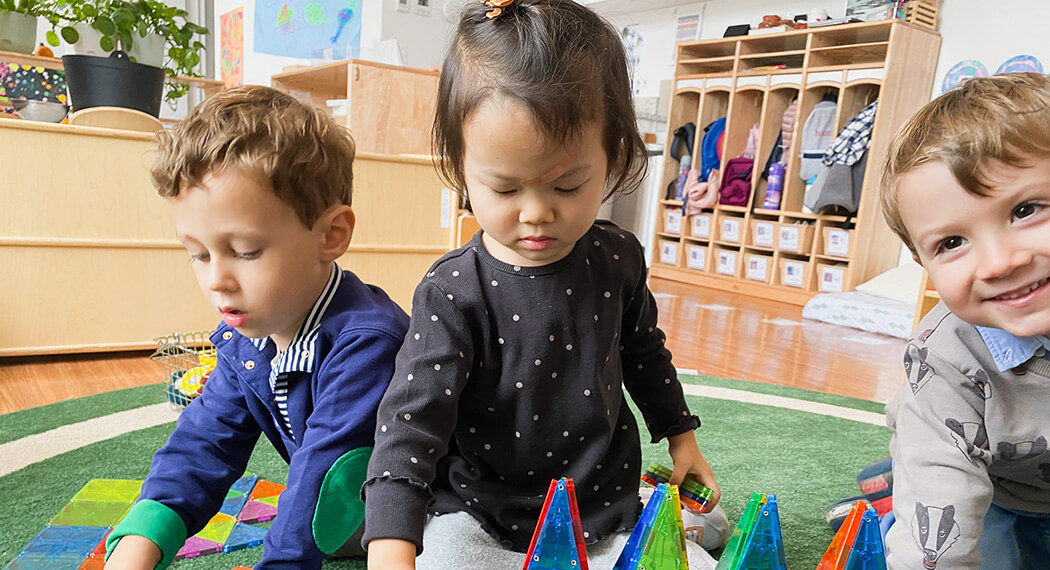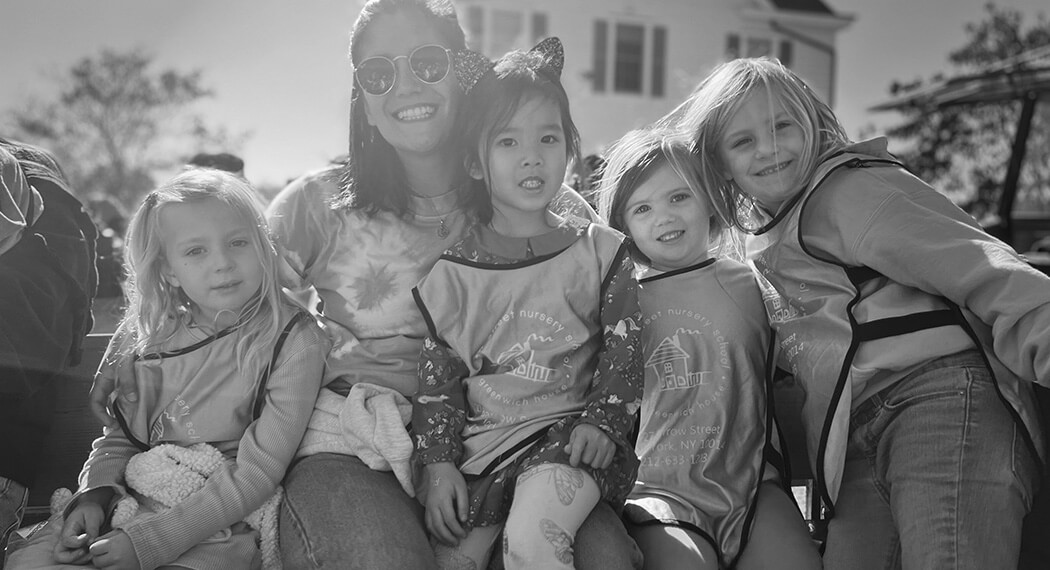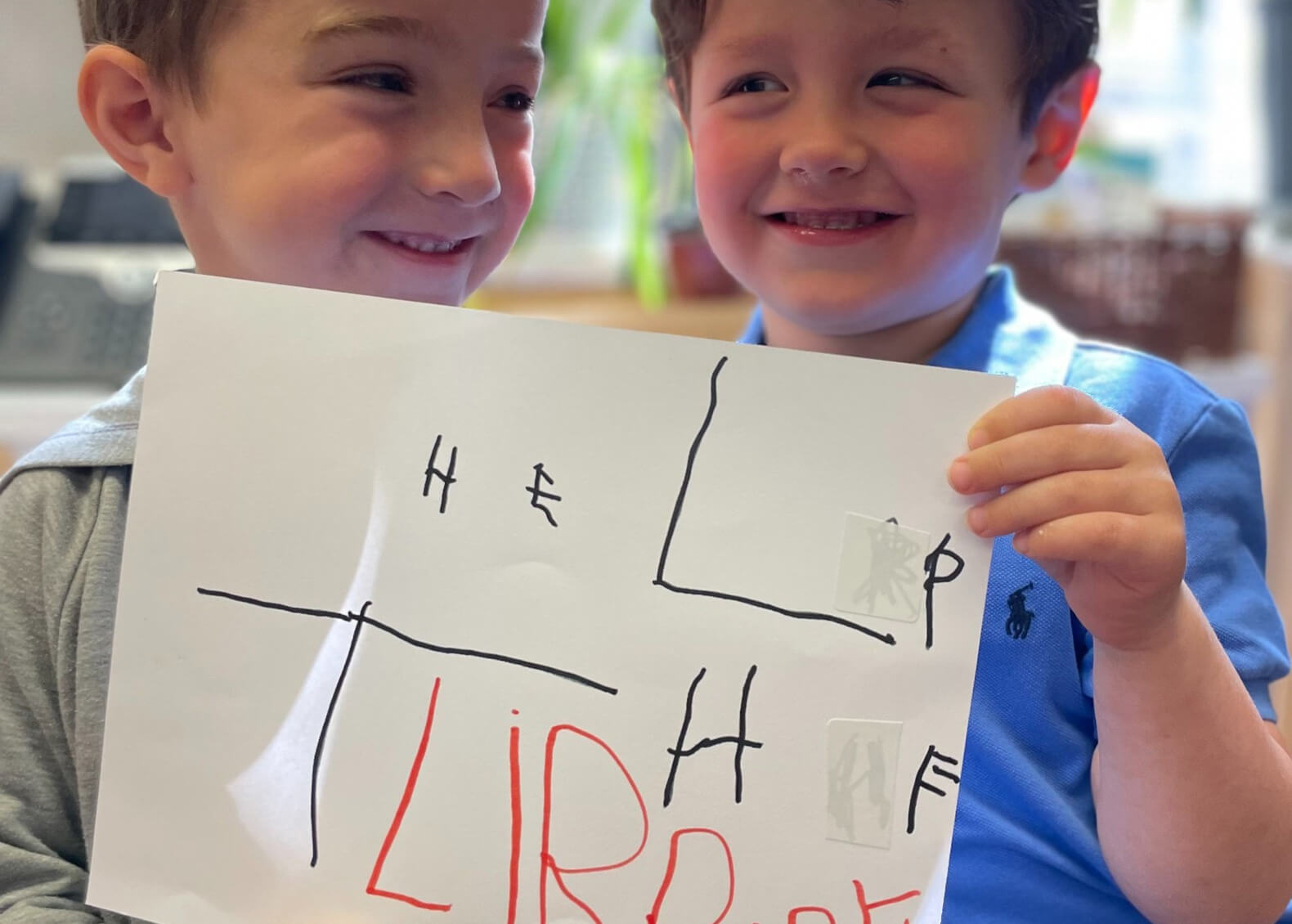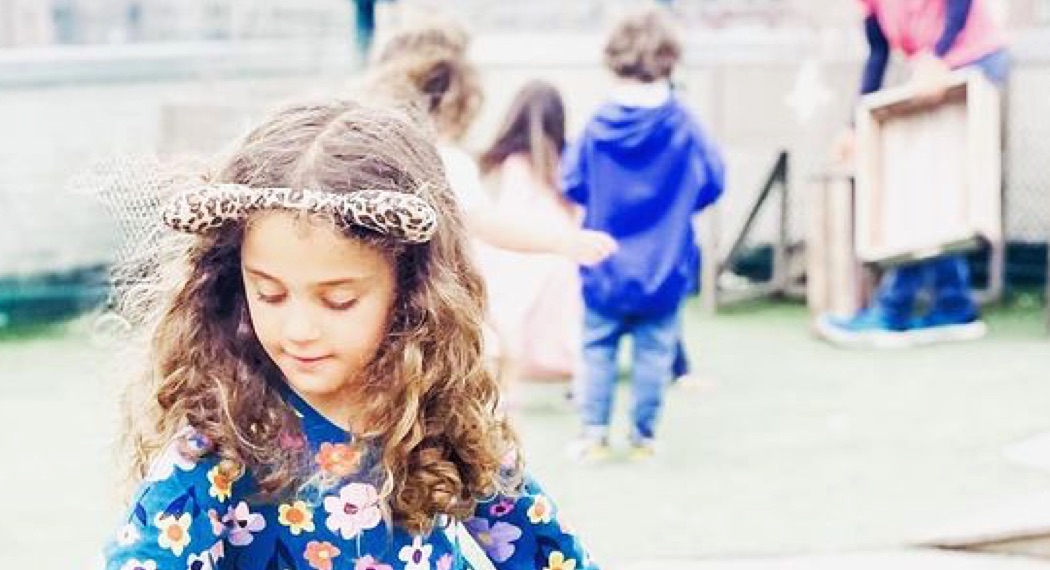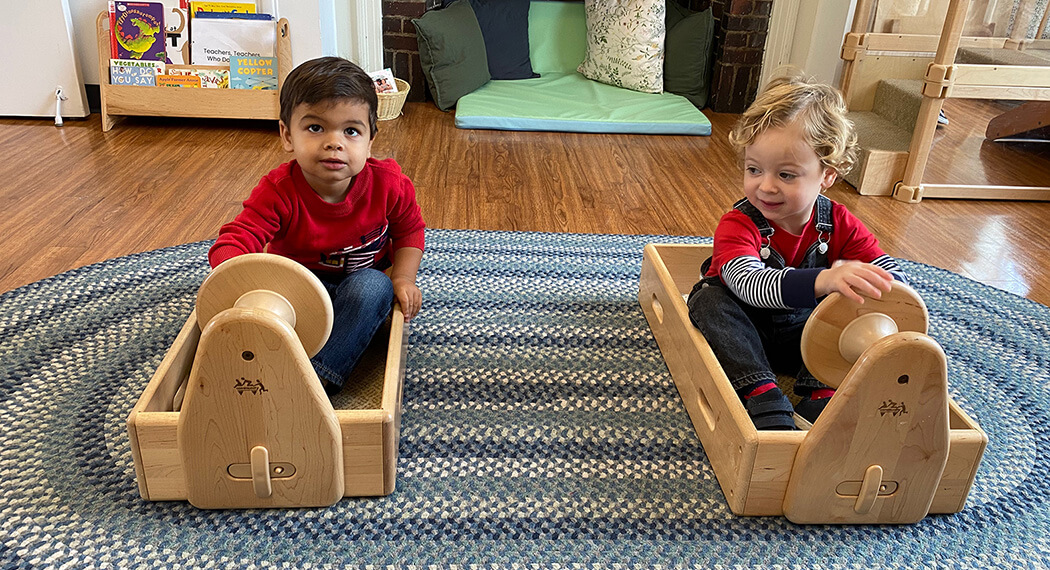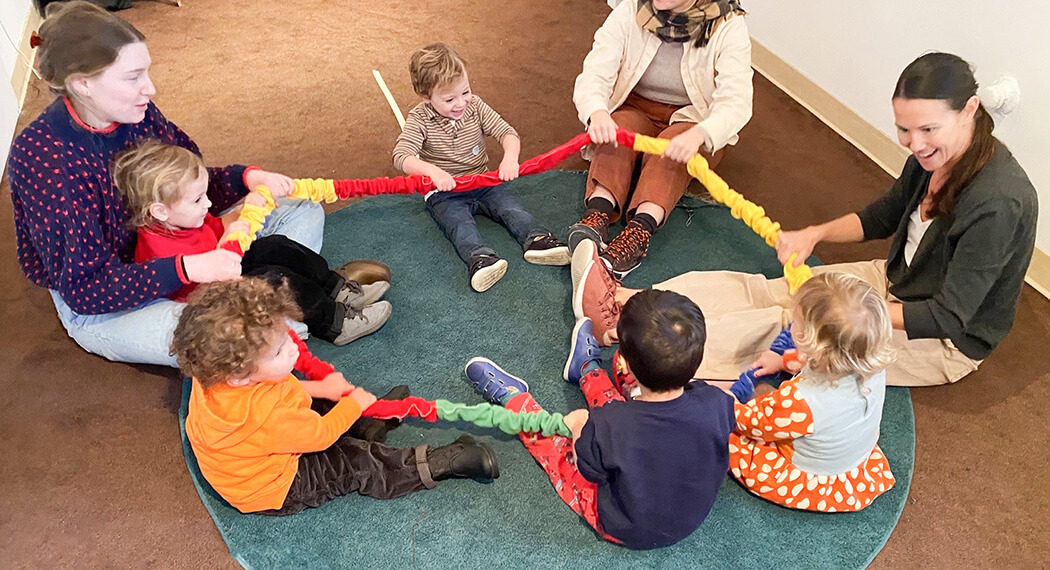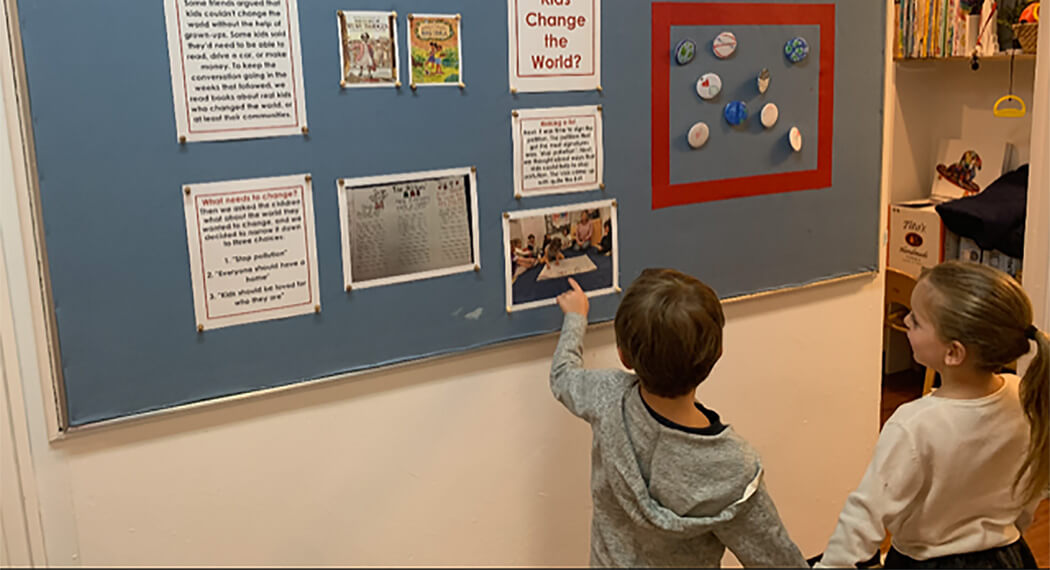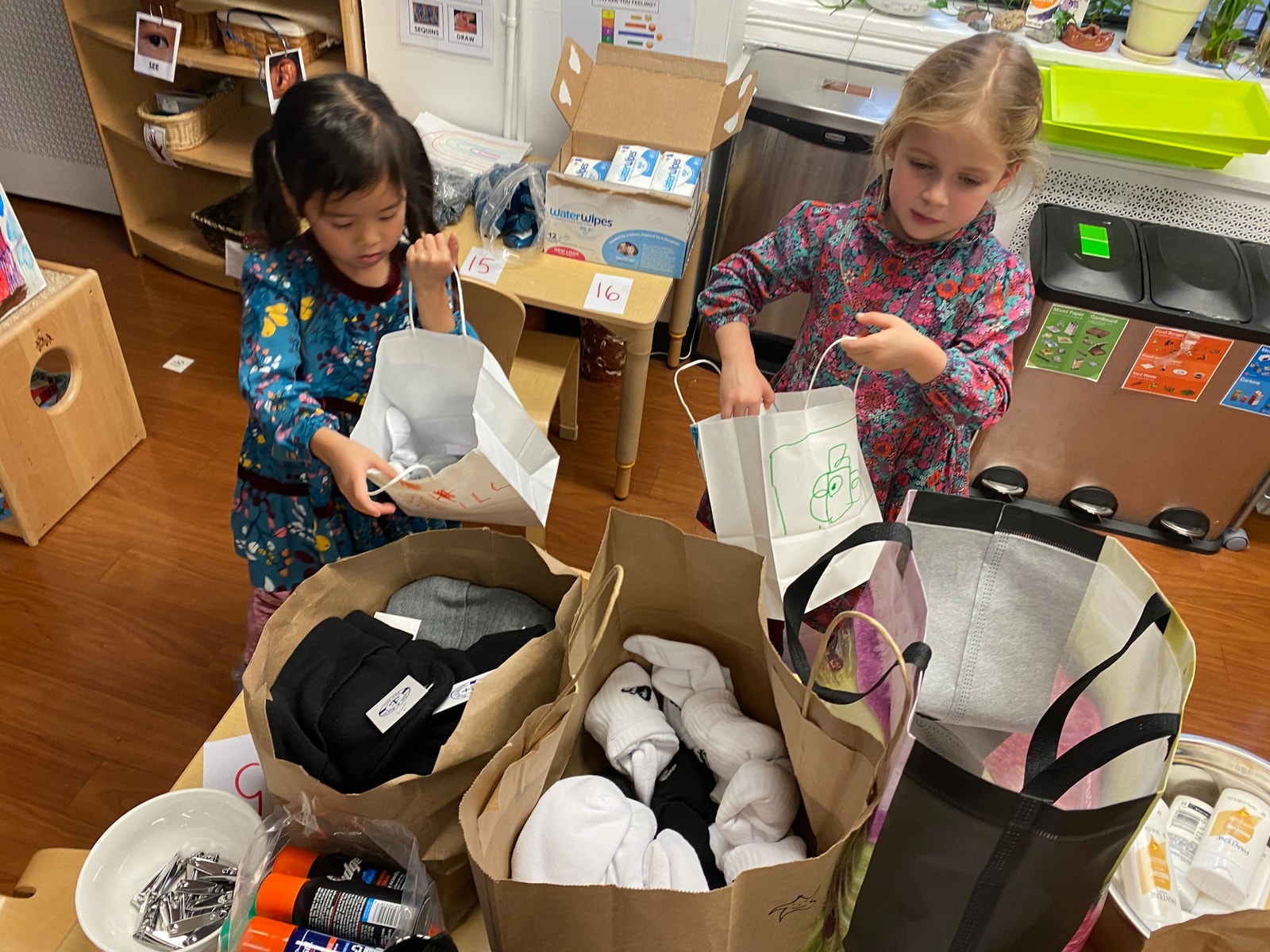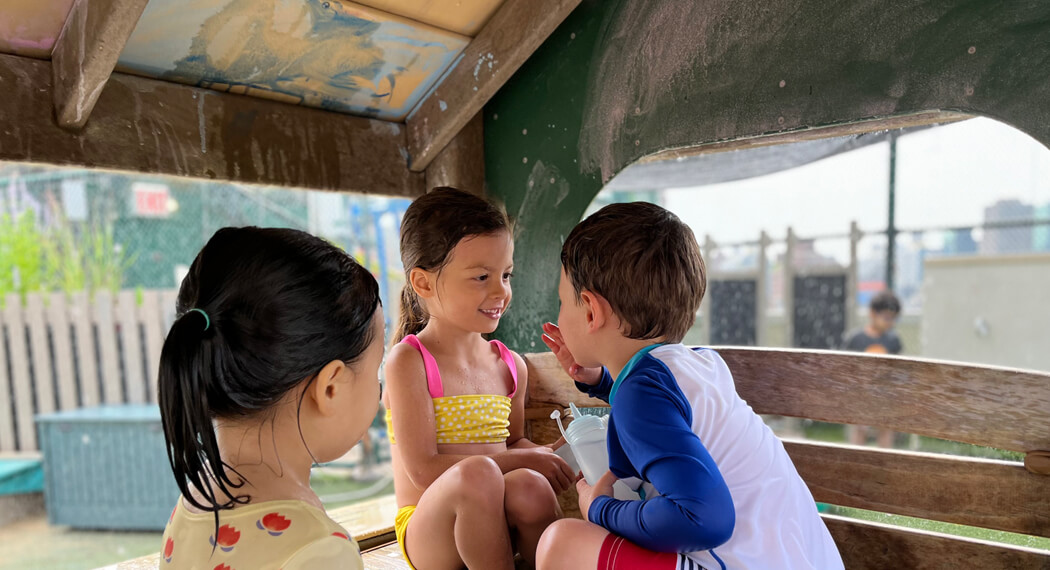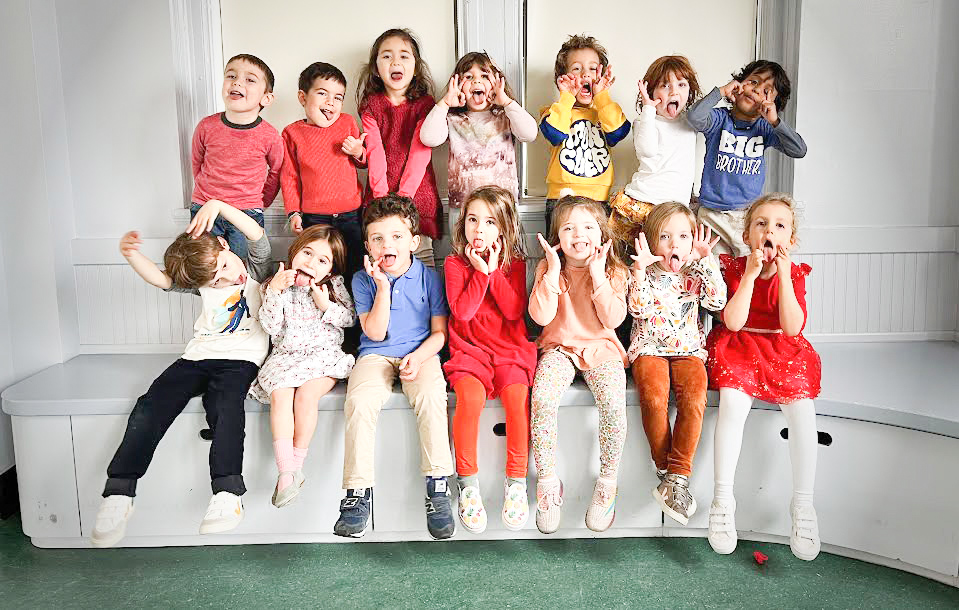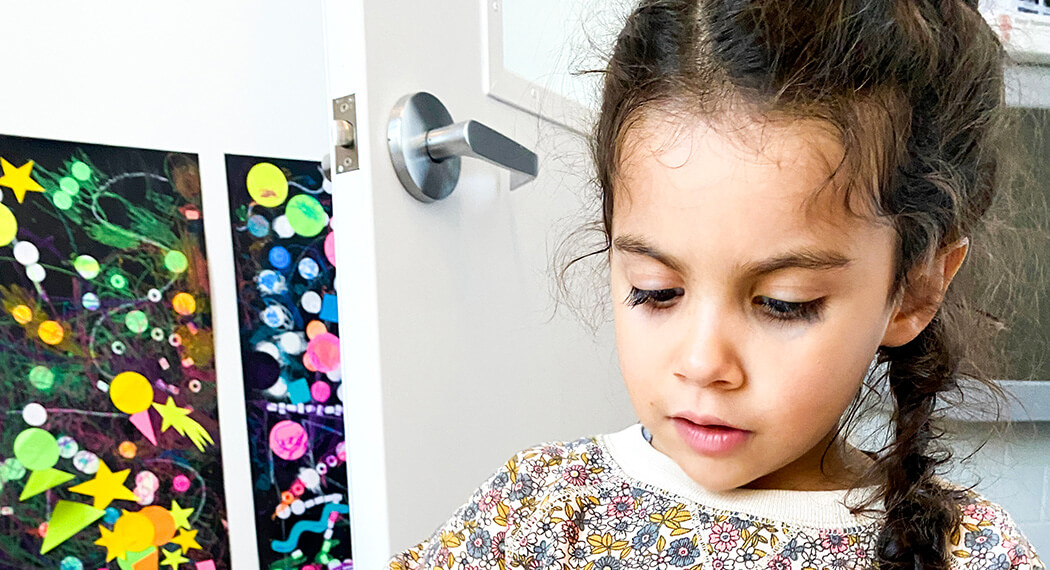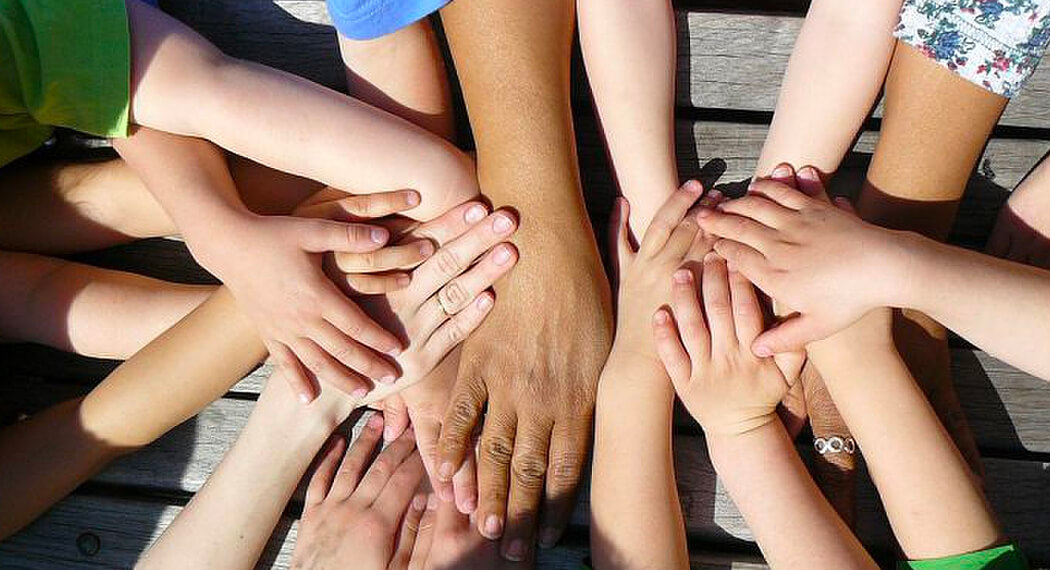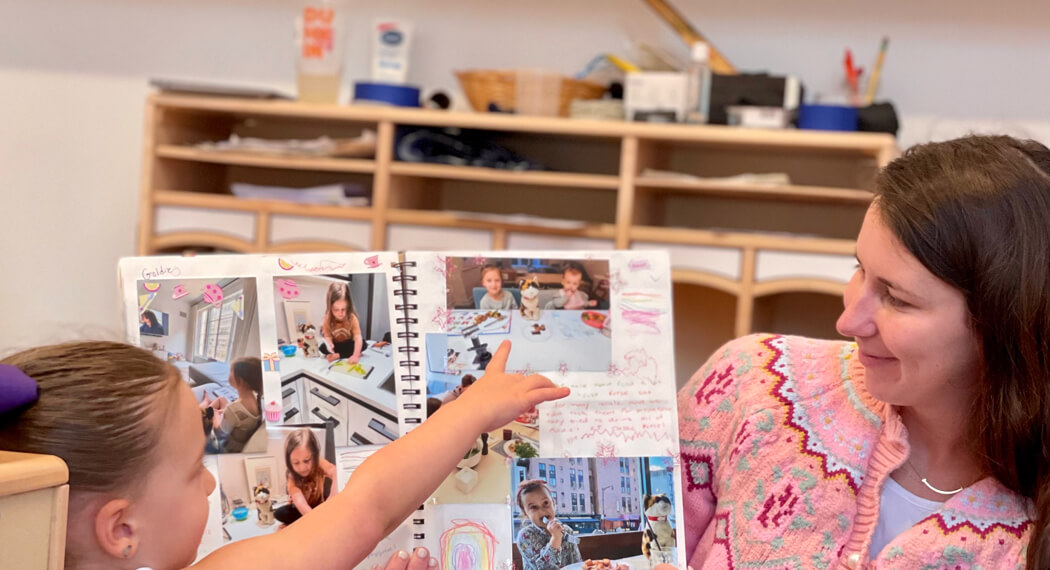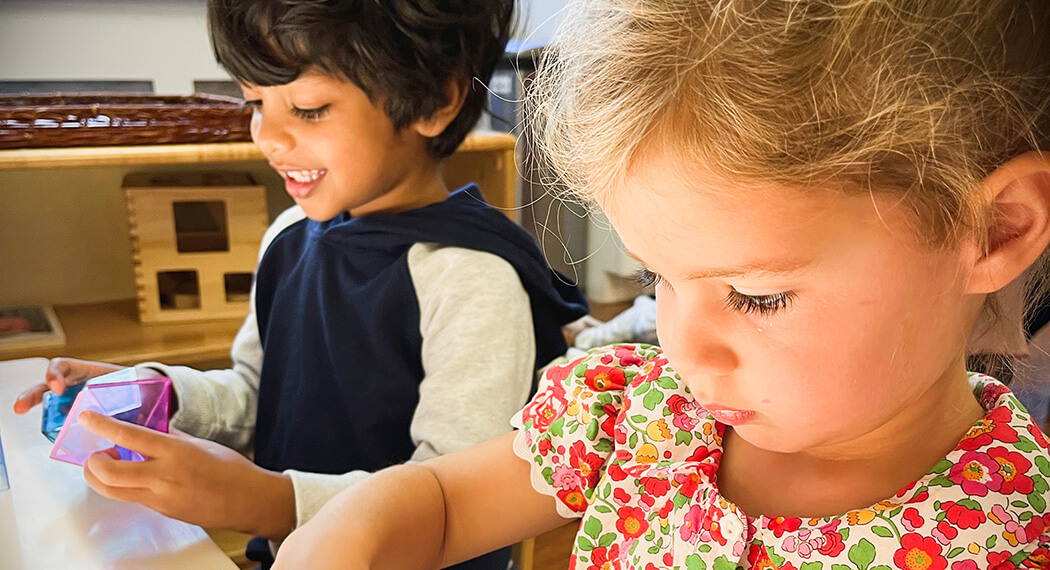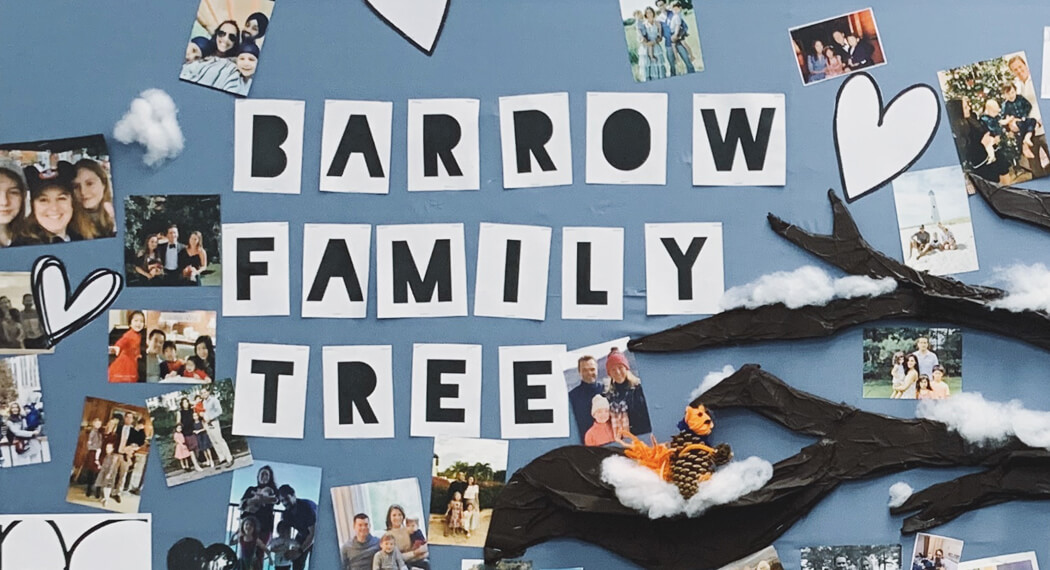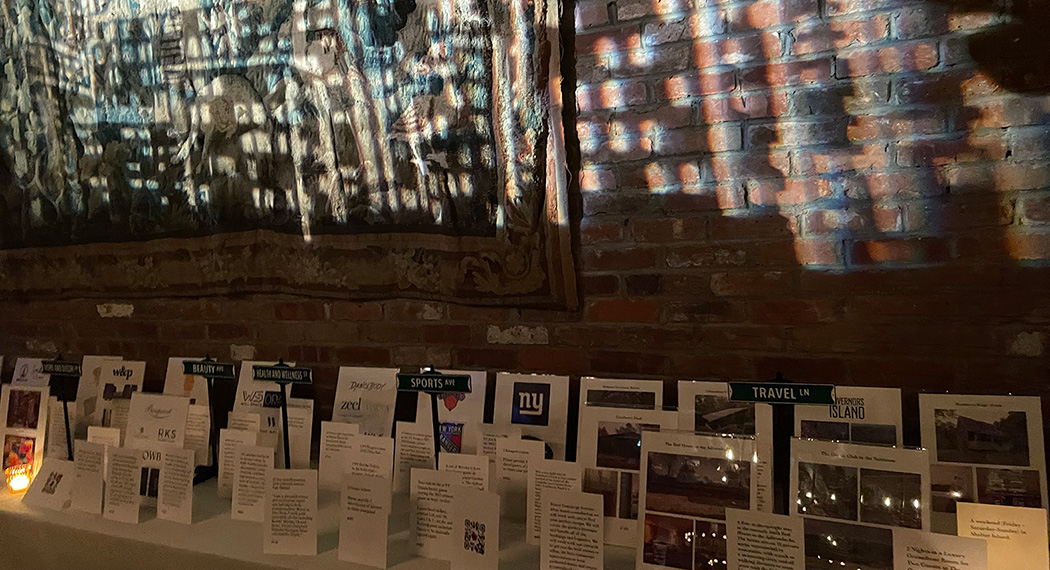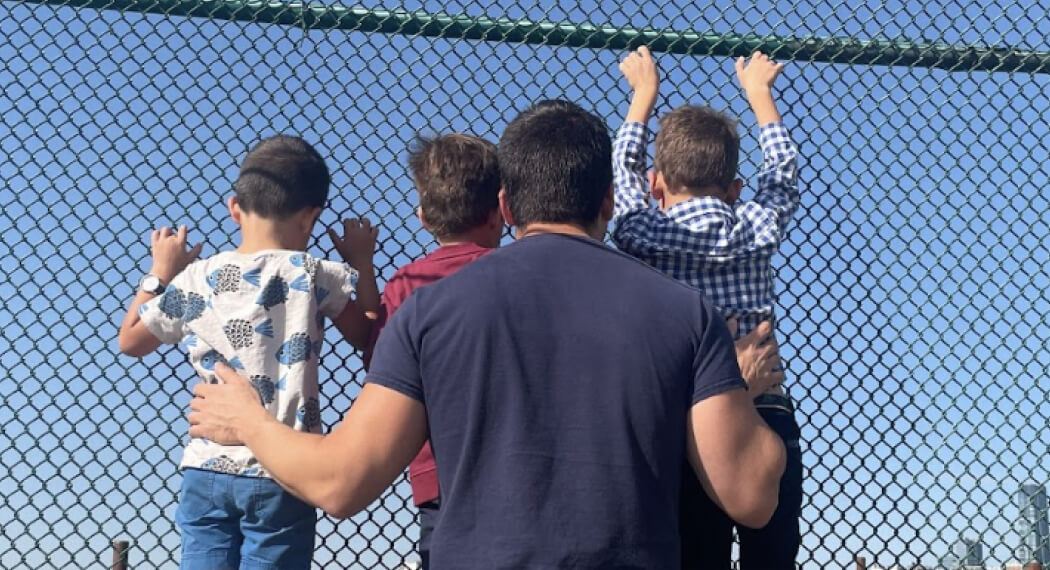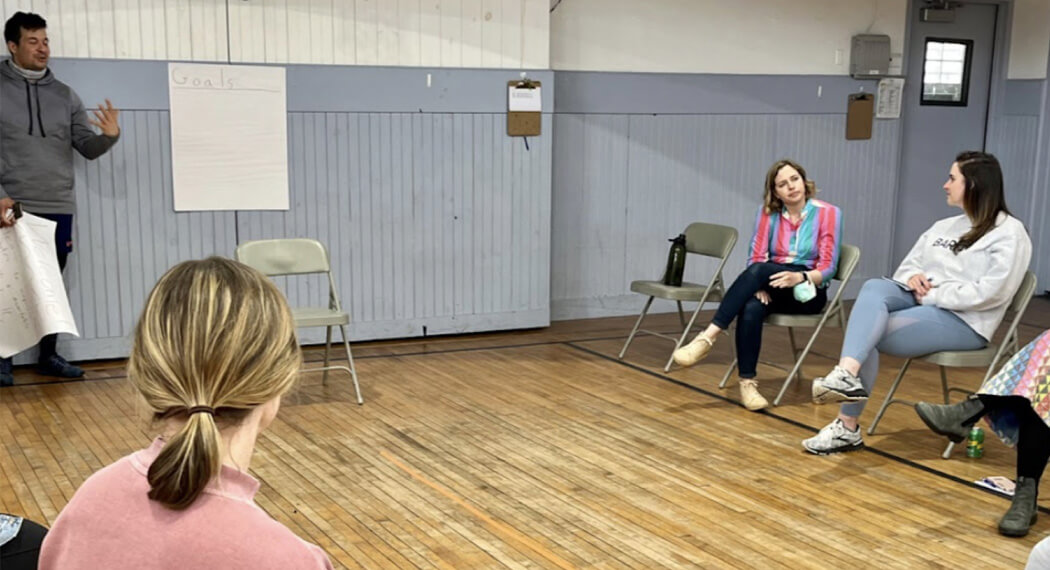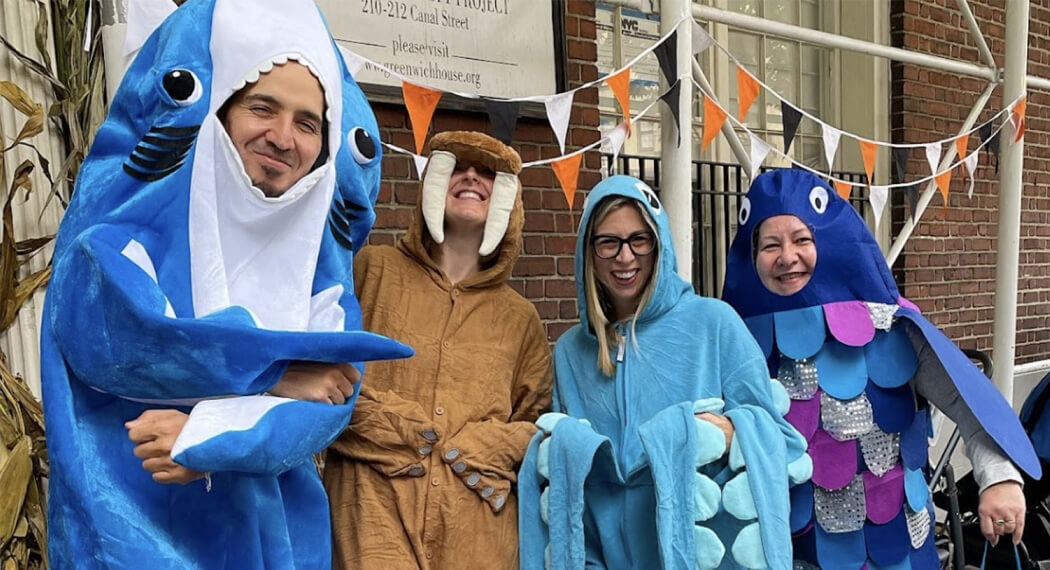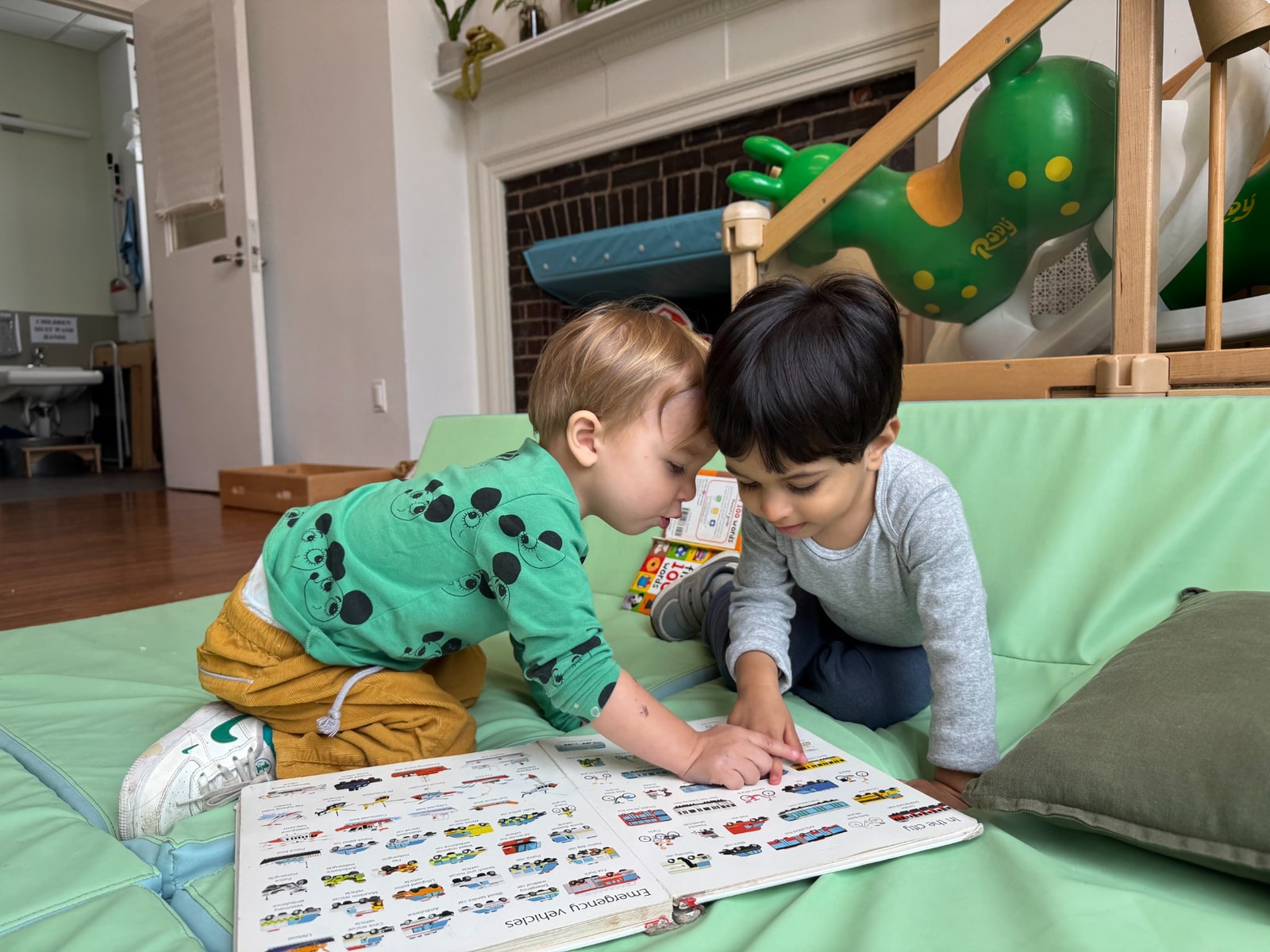What a wonderful Back to School Night! Thank you for joining this journey with us. For families who could not attend, we missed you!
As we jump into October, we have been enjoying our time getting to know the children! Learning about who they are (Being), what community means to them individually and as a group (Belonging), and the many different ways they communicate their thoughts, ideas, emotions, and who they are (Expressing). From the perspective of a teacher in the classroom, these may be thoughts that pop in our minds in our day to day.
BEING
How we see it
I see Being in the quiet moments of discovery, like when a friend glances out the window, pointing to the places and the people they see and kinds of vehicles zooming by. I notice their eyes widen as they follow each movement as they mouth ‘woah.’
I also see Being in the loud moments of discovery, like realizing our classroom magnets not only stick to the doors but also to the air purifier and fridge. Their contagious laughter and screams of excitement fill the classroom, drawing attention from other friends as they pause their play to glance over at this discovery.
I see Being when a friend builds with blocks, carefully balancing each block on top of the other or when a friend proudly marches straight to the bathroom to wash hands, ready to start their day.
Each of these small or big moments tells me a story of who they are, how they feel, and what they can do.
How we support it
I see you, and I accept you where you are.
Throughout the school day, we offer space for children to explore at their own pace. In moments when children are feeling stuck with an idea, we offer guidance through language and gestures to encourage their persistence and independence. We might say, “Try turning the block around,” or “You figured it out!” We stay nearby for support when needed but also step back, giving children independence of their choices, investigating their questions, and discovering what they can do!
BELONGING
How we see it
I see Belonging when friends take turns to ring the bell for clean up time. I see children beginning to build trust and connection with teachers and friends as they share their discoveries, take part in classroom routines, and reach out for hugs and high fives.
I see Belonging when friends peek around the classroom and eagerly point out to friends who are in school today, or when they notice each other’s movement as they make eye contact before their next zoom with shopping carts in the gym, racing back and forth in shared laughter and excitement. I also see Belonging through quiet imitation, when two friends play nearby, each with a baby doll and a blanket as they carefully wrap them and put them to sleep.
I also see Belonging when a child requests their book preference for teachers to read during meeting time, or when they hold their family book so close to their heart and enjoy chatting about their special people to others.
In these moments, I see they are beginning to understand that the classroom is a space where they can share themselves with us and be a part of the community.
How we support it
I am here with you, you are safe, and together we will build trust and connection in this community.
At this time of the school year, we support Belonging through creating familiar and consistent routines, like introducing the same songs, books, and faces that fill up our school days! The predictability of the environment may help children ease into the space. As they begin to settle, they may start to notice what is happening around them. These are the small beginnings of relationships forming through shared experiences, like the glances exchanged as they observe each other’s work or the way they snack during snack time, playing side by side, and the acts of care that begin to grow like handing friends their family books or checking in on friends who are missing their home.
EXPRESSING
How we see it
I see Expressing in the fast dots my friends make with the paint sticks or when another friend slowly swirls their paint stick across their hand.
I see Expressing in the kitchen area, when my friends cook delicious meals for the baby dolls, as they use pompoms and different kitchen tools to mix, mash, and squeeze or when another friend drives their train across tables and the classroom floors as they engage in self talk.
I see Expressing in the way children move their body during Music with Megan, the way they use their hands to press, roll, and poke into the play dough.
Like Reggio Emilia’s 100 Languages of Children, we honor and carefully listen to the many different ways children tell their stories in different moments whether through words, gestures, body movements, sound, art, and music.
How we support it
I am listening to you, and I honor all the ways you share yourself.
Our class is filled with materials that encourage children to explore! Whether it’s paint, play dough, cardboard, puzzles, or books, these materials encourage children to express what they know, what they wonder, and who they are becoming. As we listen closely, we try to understand the story behind each movement, mark, and gesture. We give a response so children know their ideas have meaning. We might respond with a smile, a gesture, or with language like, “Your green lines are moving fast,” or “Your Magnatile tower is getting really tall!” These moments allow children to know their thoughts are valued whether it’s spoken, danced, or scribbled.
Every sound, movement, and work becomes a way of saying, this is me!!
Ask Your Child
Did you color with paint sticks today? What colors did you see?
Who did you sit with during snack time? What did you eat together?
Did Megan (Music Teacher) sing a song about the animals?

